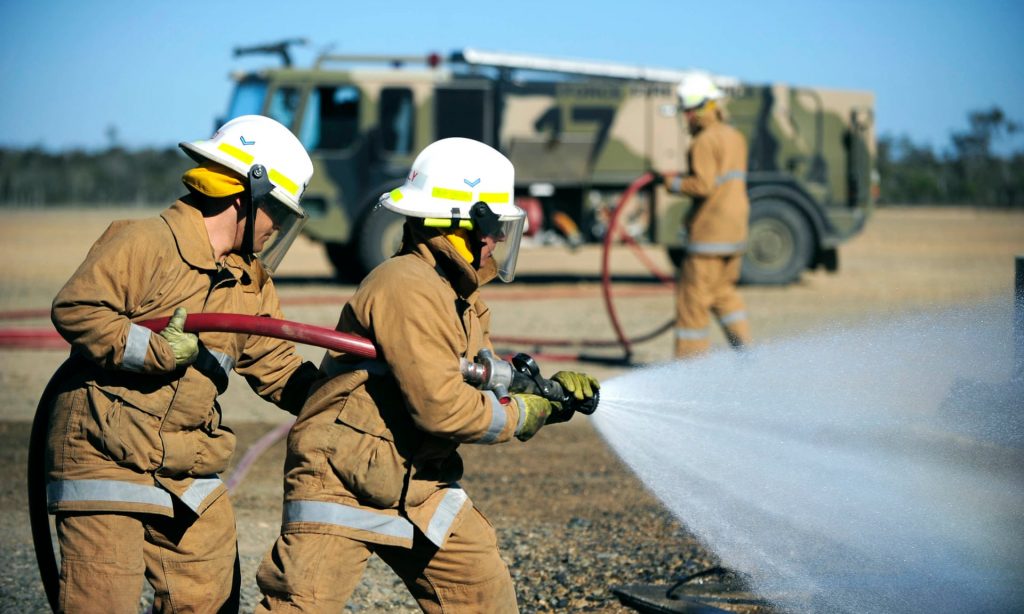Association Support for ADF Firefighters
Over the last 18 months, the Air Force Association (AFA) has supported former ADF firefighters who have been campaigning for almost two decades to have their exposure to toxic waste materials during fire training recognised.
The AFA has asked Defence to provide the number of former firefighter personnel who were trained and employed during the 1960s through to the end of the 1990s, when fire training involved burning a myriad of contaminated waste materials that have since been scientifically linked to a range of serious and often fatal health conditions. It is likely there are between 300 to 500 surviving veterans.
Background
Firefighting has been recognised, nationally and internationally, as a hazardous occupation. The US Federal Government and many US states have presumptive legislation providing for health care and compensation for civilian firefighters.
Since 2011, there has been Federal and State legislation in Australia providing similar support for civilian firefighters.
The Safety, Rehabilitation and Compensation Amendment (Fair Protection for Firefighters) Bill 2011 amended the Safety, Rehabilitation and Compensation Act, 1988 and its DRCA equivalent to provide a presumptive clause to provide for the health care and compensation for firefighters, including ADF firefighters. Moreover, Safety, Rehabilitation and Compensation Act (DRCA), 1988 provides cover for firefighters who burnt waste materials from the F111 Deseal/Reseal maintenance program.
There is great similarity among the current national and international federal and state legislations supporting firefighters. This widespread legislation emphasises the general acceptance of the likely conditions that befall these workers.
Fortunately, fire training practices have improved over the last two decades with greater emphasis on occupational health and safety, including the use of personal protection equipment (PPE). Widespread ignorance at the time of the adverse effects from burning contaminated waste materials and the lack of adequate PPE are the cause of these veterans’ serious health conditions.
The unusual number of deaths in younger age cohorts and the array of serious health conditions of these earlier firefighters came to notice seven years prior to the discovery of the serious ground contamination at the former RAAF Fire School at Point Cook in 2011.
Earlier concerns raised to Department of Veterans’ Affairs (DVA) and several former Ministers for Veterans’ Affairs on the matter were largely dismissed. The identification of 163 poisonous contaminates at the Point Cook site precipitated action by a group of former firefighters to have their exposure recognised.
Over the years, DVA has commissioned several scientific studies to evaluate the contamination and its effects on humans. Most agree there is a connection but fall short of a direct causation due to the weight of evidence required under the legislation applicable to these veterans. Moreover, due to a unique set of transitional arrangements connecting earlier legislation to current legislation, these veterans fall outside legislative support. In other words, they cannot receive the legislative support provided to contemporary ADF firefighters or their civilian equivalent.
Air Force Association Input & Action
In 2019, AFA raised the issue at DVA’s Ex-Service Organisation Round Table and has since regularly engaged DVA’s policy staff.
We have also had several meetings with the Minister for Veterans’ Affairs. The AFA has proposed a solution that requires amendment to legislation because this action is the only lawful method to provide the health support and opportunity for compensation, where applicable.
The Air Force Association and these former firefighters are waiting on a response from the Minister for Veterans’ Affairs. They are currently investigating civil action that, hopefully, can be avoided.

